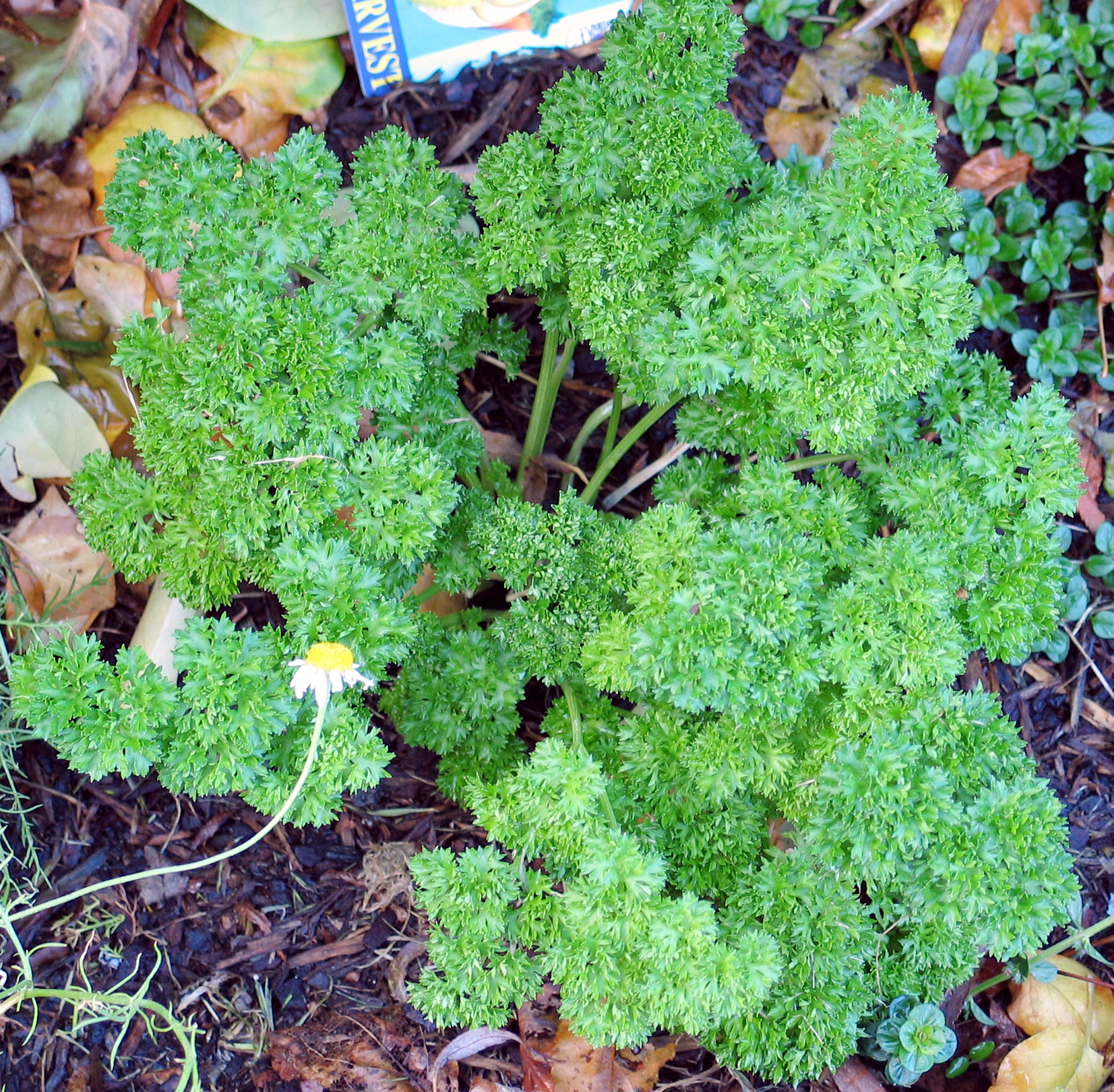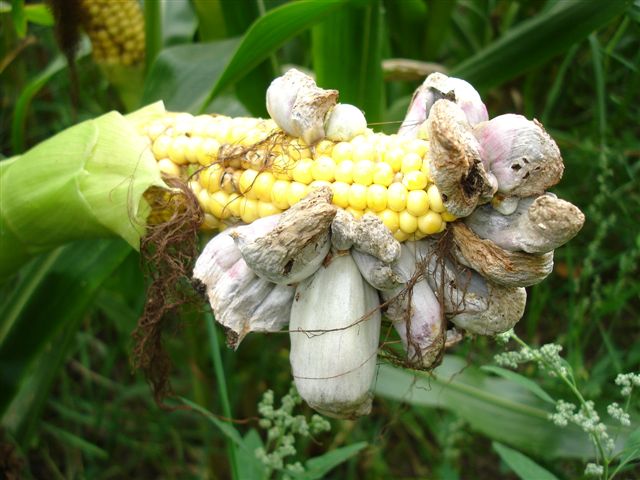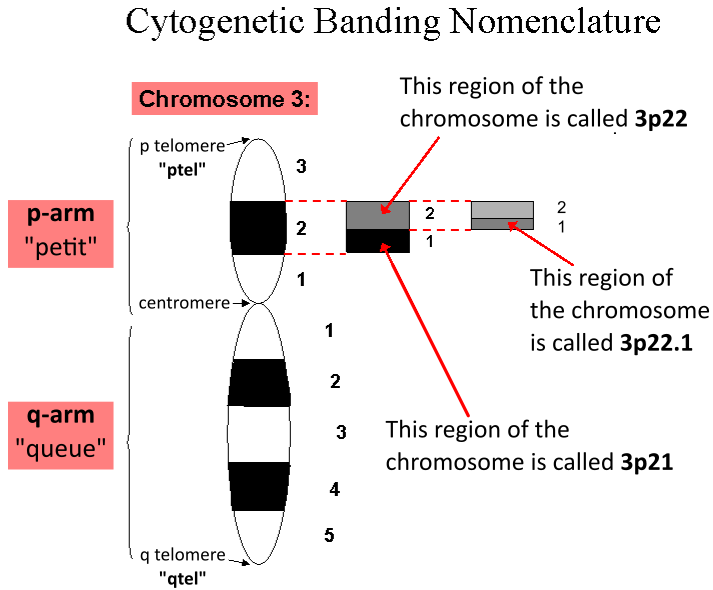|
Vernalization
Vernalization () is the induction of a plant's flowering process by exposure to the prolonged cold of winter, or by an artificial equivalent. After vernalization, plants have acquired the ability to flower, but they may require additional seasonal cues or weeks of growth before they will actually do so. The term is sometimes used to refer to the need of herbal (non-woody) plants for a period of cold dormancy in order to produce new shoots and leaves, but this usage is discouraged. Many plants grown in temperate climates require vernalization and must experience a period of low winter temperature to initiate or accelerate the flowering process. This ensures that reproductive development and seed production occurs in spring and winters, rather than in autumn. The needed cold is often expressed in chill hours. Typical vernalization temperatures are between 1 and 7 degrees Celsius (34 and 45 degrees Fahrenheit). For many perennial plants, such as fruit tree species, a period of col ... [...More Info...] [...Related Items...] OR: [Wikipedia] [Google] [Baidu] [Amazon] |
Trofim Lysenko
Trofim Denisovich Lysenko (; , ; 20 November 1976) was a Soviet agronomist and scientist.''An ill-educated agronomist with huge ambitions, Lysenko failed to become a real scientist, but greatly succeeded in exposing of the “bourgeois enemies of the people.” From such a “scion” who was “grafted” to the Stalinist totalitarian regime “stock”, impressive results could have been expected—and were indeed achieved.'' He was a proponent of Lamarckism, and rejected Mendelian inheritance, Mendelian genetics in favour of his own idiosyncratic, Pseudoscience, pseudoscientific ideas later termed Lysenkoism. In 1940, Lysenko became director of the Institute of Genetics of the Russian Academy of Sciences, Soviet Academy of Sciences, and he used his political influence and power to suppress dissenting opinions and discredit, marginalize, and imprison his critics, elevating his anti-Mendelian theories to state-sanctioned doctrine. Soviet scientists who refused to renounce gene ... [...More Info...] [...Related Items...] OR: [Wikipedia] [Google] [Baidu] [Amazon] |
Flower
Flowers, also known as blooms and blossoms, are the reproductive structures of flowering plants ( angiosperms). Typically, they are structured in four circular levels, called whorls, around the end of a stalk. These whorls include: calyx, modified leaves; corolla, the petals; androecium, the male reproductive unit consisting of stamens and pollen; and gynoecium, the female part, containing style and stigma, which receives the pollen at the tip of the style, and ovary, which contains the ovules. When flowers are arranged in groups, they are known collectively as inflorescences. Floral growth originates at stem tips and is controlled by MADS-box genes. In most plant species flowers are heterosporous, and so can produce sex cells of both sexes. Pollination mediates the transport of pollen to the ovules in the ovaries, to facilitate sexual reproduction. It can occur between different plants, as in cross-pollination, or between flowers on the same plant or even the same f ... [...More Info...] [...Related Items...] OR: [Wikipedia] [Google] [Baidu] [Amazon] |
Stratification (seeds)
In horticulture, stratification is a process of treating seeds to simulate natural conditions that the seeds must experience before germination can occur. Many seed species have an embryonic dormancy phase and generally will not sprout until this dormancy is broken. The term stratification can be traced back to at least 1664 in John Evelyn's ''Sylva, or A Discourse of Forest-Trees and the Propagation of Timber'', where seeds were layered (stratified) between layers of moist soil and the strata were exposed to winter conditions. Thus, stratification became the process by which seeds were artificially exposed to conditions to encourage germination. Cold stratification Cold stratification is the process of subjecting seeds to both cold and moist conditions. Seeds of many trees, shrubs and perennials require these conditions before germination will ensue. In the wild, seed dormancy is usually overcome by the seed spending time in the ground through a winter period and having its har ... [...More Info...] [...Related Items...] OR: [Wikipedia] [Google] [Baidu] [Amazon] |
Biennial Plant
A biennial plant is a flowering plant that, generally in a temperate climate, takes two years to complete its biological life cycle. Background In its first year, the biennial plant undergoes primary growth, during which its vegetative structures (leaves, stems, and roots) develop. Usually, the stem of the plant remains short and the leaves are low to the ground, forming a rosette. After one year's growing season, the plant enters a period of dormancy for the colder months. Many biennials require a cold treatment, or vernalization before they will flower. During the next spring or summer, the stem of the biennial plant elongates greatly, or "bolts". The plant then flowers, producing fruits and seeds before it finally dies. There are far fewer biennials than either perennial plants or annual plants. Biennials do not always follow a strict two-year life cycle: most plants in the wild can take three or more years to mature. Rosette leaf size has been found to predict when a pla ... [...More Info...] [...Related Items...] OR: [Wikipedia] [Google] [Baidu] [Amazon] |
Hyoscyamus Niger Hullukaali Bolmört C IMG 7657
''Hyoscyamus'' — known as the henbanes — is a genus of flowering plants in the nightshade family, Solanaceae. It comprises 31 species, all of which are toxic. It, along with other genera in the same family, is a source of the drug hyoscyamine (daturine). Cruciferous type of stomata are present in Hyoscyamus. ''Hyoscyamus'' means "hog-bean" in botanical Latin and was a name derogatorily applied to the plant by Dioscorides. The poisonous, narcotic henbanes were associated with witchcraft since earliest times. The Assyrians recommended hanging them on one's door to ward off sorcery. Witches found them valuable especially due to their trance-inducing capabilities, and they were used in flying ointment rituals. They have been used to lessen pain, neuralgia and diminish convulsions. Dioscorides recommended them largely for external pain killing use. The leaves are made into a kind of cigarette to relieve asthma and other respiratory ailments.Flowers of Greece and the Aegean by Ant ... [...More Info...] [...Related Items...] OR: [Wikipedia] [Google] [Baidu] [Amazon] |
Gustav Gassner
Gustav Gassner (born 17 January 1881 in Berlin; died 5 February 1955 in Lüneburg) was a German botanist and plant pathologist whose 1918 paper on vernalization has been called "the first systematic study of temperature as a factor in the developmental physiology of plants." His wide-ranging research interests in phytopathology and plant physiology included work on photosynthesis and plant nutrition as well as practical work on plant diseases such as Rust (fungus), rust and Smut (fungus), smut. His classic text from 1931 ''Mikroskopische Untersuchung pflanzlicher Lebensmittel und Futtermittel'' ("Microscopic examination of plant foods and beverages") is still in use in German universities and is still referred to by German students as "Gassner." Personal life In 1910 he returned to Germany from Montevideo, Uruguay and married Lili Fassier-Farnell, with whom he had four sons and a daughter. Scientific career Gassner, the son of emigrants from Salzburg, attended the Friedrichs-Gym ... [...More Info...] [...Related Items...] OR: [Wikipedia] [Google] [Baidu] [Amazon] |
Agricultural Terminology
Agriculture encompasses crop and livestock production, aquaculture, and forestry for food and non-food products. Agriculture was a key factor in the rise of sedentary human civilization, whereby farming of domesticated species created food surpluses that enabled people to live in the cities. While humans started gathering grains at least 105,000 years ago, nascent farmers only began planting them around 11,500 years ago. Sheep, goats, pigs, and cattle were domesticated around 10,000 years ago. Plants were independently cultivated in at least 11 regions of the world. In the 20th century, industrial agriculture based on large-scale monocultures came to dominate agricultural output. , small farms produce about one-third of the world's food, but large farms are prevalent. The largest 1% of farms in the world are greater than and operate more than 70% of the world's farmland. Nearly 40% of agricultural land is found on farms larger than . However, five of every six far ... [...More Info...] [...Related Items...] OR: [Wikipedia] [Google] [Baidu] [Amazon] |
Onion
An onion (''Allium cepa'' , from Latin ), also known as the bulb onion or common onion, is a vegetable that is the most widely cultivated species of the genus '' Allium''. The shallot is a botanical variety of the onion which was classified as a separate species until 2011. The onion's close relatives include garlic, scallion, leek, and chives. The genus contains several other species variously called onions and cultivated for food, such as the Japanese bunching onion '' Allium fistulosum'', the tree onion ''Allium'' × ''proliferum'', and the Canada onion '' Allium canadense''. The name '' wild onion'' is applied to a number of ''Allium'' species, but ''A. cepa'' is exclusively known from cultivation. Its ancestral wild original form is not known, although escapes from cultivation have become established in some regions. The onion is most frequently a biennial or a perennial plant, but is usually treated as an annual and harvested in its first growing season. ... [...More Info...] [...Related Items...] OR: [Wikipedia] [Google] [Baidu] [Amazon] |
Locus (genetics)
In genetics, a locus (: loci) is a specific, fixed position on a chromosome where a particular gene or genetic marker is located. Each chromosome carries many genes, with each gene occupying a different position or locus; in humans, the total number of Human genome#Coding sequences (protein-coding genes), protein-coding genes in a complete haploid set of 23 chromosomes is estimated at 19,000–20,000. Genes may possess multiple variants known as alleles, and an allele may also be said to reside at a particular locus. Diploid and polyploid cells whose chromosomes have the same allele at a given locus are called homozygote, homozygous with respect to that locus, while those that have different alleles at a given locus are called heterozygote, heterozygous. The ordered list of loci known for a particular genome is called a gene map. Gene mapping is the process of determining the specific locus or loci responsible for producing a particular phenotype or biological trait. Association ma ... [...More Info...] [...Related Items...] OR: [Wikipedia] [Google] [Baidu] [Amazon] |
Meristem
In cell biology, the meristem is a structure composed of specialized tissue found in plants, consisting of stem cells, known as meristematic cells, which are undifferentiated cells capable of continuous cellular division. These meristematic cells play a fundamental role in plant growth, regeneration, and acclimatization, as they serve as the source of all differentiated plant tissues and organs. They contribute to the formation of structures such as fruits, leaves, and seeds, as well as supportive tissues like stems and roots. Meristematic cells are totipotent, meaning they have the ability to differentiate into any plant cell type. As they divide, they generate new cells, some of which remain meristematic cells while others differentiate into specialized cells that typically lose the ability to divide or produce new cell types. Due to their active division and undifferentiated nature, meristematic cells form the foundation for the formation of new plant organs and the c ... [...More Info...] [...Related Items...] OR: [Wikipedia] [Google] [Baidu] [Amazon] |
Bolting (horticulture)
In horticulture, bolting is the production of a flowering stem (or stems) on agricultural and horticultural crops before the harvesting of a crop, at a stage when a plant makes a natural attempt to produce seeds and to reproduce. The flowering stems are usually vigorous extensions of existing leaf-bearing stems; to produce them, a plant diverts resources from producing the edible parts (such as leaves or roots), resulting in changes in flavor and texture, withering, and in general, a poor-quality harvest. Plants that have produced flowering stems in this way are said to have bolted. Crops inclined to bolt include lettuce, basil, beetroot, brassicas, spinach, celery, onion, and leek. Bolting is induced by plant hormones of the gibberellin family, and can occur as a result of several factors, including changes in day length, the prevalence of high temperatures at particular stages in a plant's growth-cycle, and the existence of stresses such as insufficient water or mineral ... [...More Info...] [...Related Items...] OR: [Wikipedia] [Google] [Baidu] [Amazon] |
Arabidopsis Thaliana Rosette
''Arabidopsis'' (rockcress) is a genus in the family Brassicaceae. They are small flowering plants related to cabbage and Mustard plant, mustard. This genus is of great interest since it contains thale cress (''Arabidopsis thaliana''), one of the model organisms used for studying plant biology and the first plant to have its entire genome sequenced. Changes in thale cress are easily observed, making it a very useful model. Status Currently, the genus ''Arabidopsis'' has nine species and a further eight subspecies recognised. This delimitation is quite recent and is based on morphological and molecular phylogenies by O'Kane and Al-Shehbaz and others. Their findings confirm the species formerly included in ''Arabidopsis'' made it polyphyletic. The most recent reclassification moves two species previously placed in ''Cardaminopsis'' and ''Hylandra'' and three species of ''Arabis'' into ''Arabidopsis'', but excludes 50 that have been moved into the new genera ''Beringia (plant), Ber ... [...More Info...] [...Related Items...] OR: [Wikipedia] [Google] [Baidu] [Amazon] |






